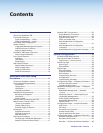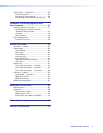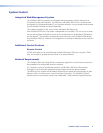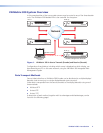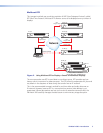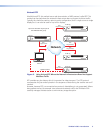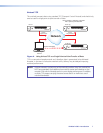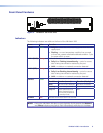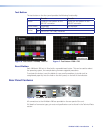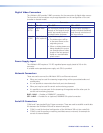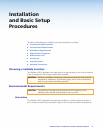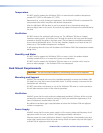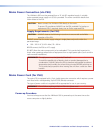
VN-Matrix 300 • Introduction 6
Unicast RTP
Like Multicast RTP, this method uses a real-time variation of UDP protocol, called RTP. This
method can be used where the network infrastructure does not support multicast traffic.
Typically this should be used as a point-to-point configuration (that is: single source to single
display) but it can also be used for up to four displays.
Network
VN-MATRIX 300 SERIES
SERIAL DIGITAL VIDEO OVER IP
LAN-1
LAN-2
STATUS
ALARM
TEST
VN-MATRIX 300 SERIES
SERIAL DIGITAL VIDEO OVER IP
LAN-1
LAN-2
STATUS
ALARM
TEST
VN-MATRIX 300 SERIES
SERIAL DIGITAL VIDEO OVER IP
LAN-1
LAN-2
STATUS
ALARM
TEST
VN-MATRIX 300 SERIES
SERIAL DIGITAL VIDEO OVER IP
LAN-1
LAN-2
STATUS
ALARM
TEST
VN-MATRIX 300 SERIES
SERIAL DIGITAL VIDEO OVER IP
LAN-1
LAN-2
STATUS
ALARM
TEST
Monitoring &
Control
IP Tx 1
IP Rx (b)
IP Rx (a)
IP Rx (c)
IP Rx (d)
RTP
Program Data
RTP
Program Data
RTP
Program Data
RTP
Program Data
RTP
Program Data
System Control
Up to four decoders may be part of
the UNICAST RTP group.
Figure 3. Using Unicast RTP Where the Network Infrastructure Does Not Support
Multicast Traffic
RTP provides very low latency which is important for video transport. The RTP protocol
compensates for jitter and any breaks in the sequence of data during the transfer over an IP
network.
However, because RTP is a connection-less protocol, data delivery is not guaranteed. Where
data packets are lost (for example: due to excessive network trafc) the VN-Matrix 300
carefully manages the data stream to minimize any image disruption.




